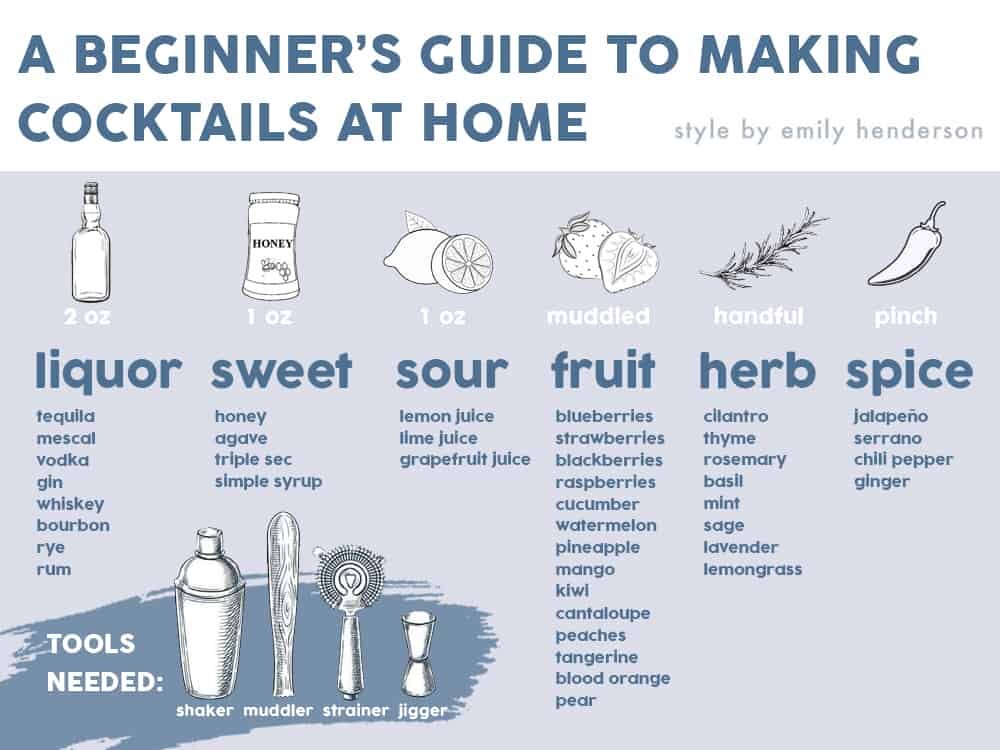the anatomy of a cocktail & a guide to start mixing
The anatomy of a cocktail, something your vodka and tonic college self never cared to understand. As long as the liquor was strong and the tonic was diet, you were ready to rage. As our palettes (and maturity) have expanded, ordering a cocktail looks a little different nowadays. And recently, with the sad but necessary news of bars being shut down again, knowing how to recreate your favorite cocktails at home is even more valuable now more than ever. So how are those scientist mixologists making their delicious libations so ingeniously? With a little ingenuity, creativity, and understanding of the anatomy of a cocktail, you can call yourself an at home mixologists.
First let’s establish the 3 basic components of a cocktail through the aromatic cocktail, the Manhattan. The Manhattan dates back to the 1870s and with its very simple yet fundamental ingredients, makes for a great example of the 3 basic components of a cocktail.
The Base - Whiskey, Rye, or Bourbon
The Modifier - Sweet Vermouth
The Accent - Bitters
These three component cocktails are then split into two categories, aromatic and sour, based on what ingredients they use for ‘The Modifier’.
Sour - These cocktails use fruit juices as a modifier
Aromatic - These cocktails use bitters, vermouth, or spirits as modifiers
The Manhattan is one of my easiest go-to’s because of how simple it is. Most cocktails will have some sort of part to part ratio to help guide you when making.
I.e. A simple Margarita ratio could be 2:1:2 - 2 parts tequila, 1 part lime juice, 2 parts orange liquor.
2:1:2 is also the Manhattan ratio with 2 parts rye whiskey, 1 part sweet vermouth, 2 parts bitters.
So now that you have a couple of classic examples, here are the three components broken down:
Before we move on though, if you’re trying to cut back on alcohol, which is never a bad thing, you can still have the cocktail experience without the alcohol. Check out Ritual Zero Proof for tequila, whiskey, and gin alternatives.
The Three Cocktail Components
The Base: This is whatever spirit you are putting in. Fun Fact* Vodka and Tequila didn’t come until after 1945, with Mezcal arriving on the scene even later.
Whiskey
Cognac
Gin
Rum
Vodka
Tequila
Mescal
The Modifier: This adds an extra dimension to the base. Without it, it is no longer a cocktail
Amari
Vermouths
Fruit Juice
The Accent: This helps balance the cocktail while adding a hint of flavor.
Bitters
Liqueurs
Syrups
So now that you have the basic recipe of a cocktail, it’s time to get creative! For most cocktails that fall under the “Sour” Cocktails, you’ll use the 2:1:1 ratio - 2 parts alcohol, 1 part sweet, 1 part sour. If you’re looking for the easiest how-to guide, check out this post by Mallory Wackerman on Style By Emily. Here is the image they’ve created to help break down the anatomy of a cocktail visually, which I love! Whether you’re in a city where it’s safe to have friends over and host again or you’re creating it for just you and your roomies, I hope you’ll take some time to slow down, relax, and enjoy it!



